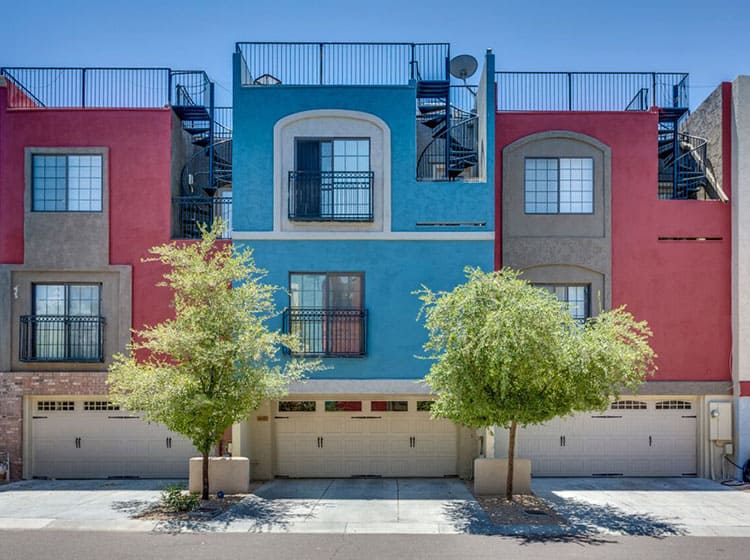Comprehensive Process For Getting Your Wall Surfaces Ready For A Fresh Layer Of Paint
Comprehensive Process For Getting Your Wall Surfaces Ready For A Fresh Layer Of Paint
Blog Article
Short Article Written By-Bergmann Dillard
When you're prepping your walls for paint, it's crucial to adhere to a systematic procedure to make certain a flawless coating. Beginning by checking out the wall for any damage; this action can make or damage your job. As soon as you've recognized any kind of issues, cleaning up the surface effectively is crucial, as a filthy wall surface can influence paint bond. After that, you'll require to spot any kind of flaws and use a guide. Yet there are specific methods and pointers that can boost your prep work video game-- let's explore those further to accomplish the most effective outcomes.
Assessing Wall Surface Problem
Before you grab your paintbrush, take a moment to evaluate your wall surfaces' problem. Look for any kind of visible damage like splits, holes, or peeling off paint. These imperfections can influence just how the paint adheres and looks as soon as it's dry. If you see any kind of considerable damage, you'll need to focus on repairs prior to diving into painting.
Look very closely at the appearance of your walls. Is the surface smooth, or exists appearance that might require unique consideration? Smooth wall surfaces normally need less preparation, while textured surfaces might require more time to paint uniformly.
Additionally, take into consideration the previous paint task. If the old paint is glossy, it mightn't permit new paint to stick properly. You'll need to know if your wall surfaces have been painted with oil-based or water-based paint, as this can impact your choice of primer or paint.
Finally, remember of any type of moisture issues. If you see signs of water damage or mold and mildew, address these issues promptly to avoid additional issues.
Cleansing the Surface area
When you have actually assessed the problem of your wall surfaces, the following step is cleaning up the surface. Start by gathering your products: a pail, cozy water, a moderate detergent, a sponge or towel, and a scrub brush for tougher spots.
Begin at the top corner of the wall surface and work your method down. Mix the cleaning agent with warm water in your pail, after that dip the sponge or fabric right into the remedy. Wring it out to stay clear of excessive wetness on the wall surfaces.
As you clean, pay close attention to locations that might've gathered dirt, grease, or finger prints. For stubborn spots, utilize the scrub brush gently to avoid damaging the paint beneath. Rinse your sponge or fabric often in clean water to prevent spreading out dust around.
After cleansing, it's vital to wipe the wall surfaces with a damp fabric to remove any type of soap residue. This step makes certain a smooth surface for the new paint to stick to.
Permit the wall surfaces to completely dry entirely before proceeding to the following prep work actions. This complete cleaning procedure will assist create a fresh canvas for your paint task, making sure the best results.
Patching and Priming
Patching and priming are essential action in preparing your wall surfaces for a fresh layer of paint. Initially, evaluate your walls for any holes, fractures, or imperfections. Utilize a premium spackling compound or patching paste to fill these locations.
Use the compound with a putty knife, smoothing it out so it's flush with the bordering surface area. Enable portland painting companies to completely dry totally, and after that sand it gently till it's smooth and also.
When you've patched whatever, it's time to prime. Primer aids seal the patched areas, guaranteeing the paint sticks appropriately and offers a consistent finish. Choose a guide appropriate for your wall type and the paint you'll be utilizing.
Use Recommended Online site utilizing a roller for bigger locations and a brush for edges and edges. If your patched locations are dramatically big or permeable, you could intend to use a second layer of primer after the very first one dries out.
After priming, allowed whatever completely dry thoroughly before going on to painting. This prep work will not only enhance the look of your wall surfaces but additionally prolong the life of your paint work.
Take your time, and you'll be pleased with the results.
Conclusion
By complying with these straightforward actions, you can attain a smooth and specialist finish on your wall surfaces. Begin by assessing their problem, after that clean and patch any kind of flaws prior to applying primer. Bear in mind to permit ample drying time and make sure whatever is smooth prior to you study paint. With the right prep work, you'll establish the stage for a stunning makeover in your room. Currently, gather your materials, take in the fresh air, and prepare yourself to repaint!
